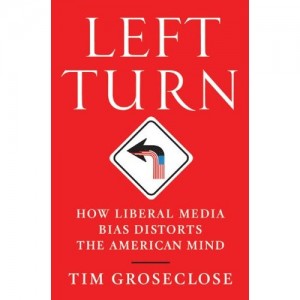Don’t Conservatives Deserve More News Media Choices in Our Free Society?
 With liberals in charge of most government, education, and media, it isn’t surprising that not even a single conservative news outlet is available to those on the right who would prefer not having to spend a great deal of their attention filtering out alien biases.
With liberals in charge of most government, education, and media, it isn’t surprising that not even a single conservative news outlet is available to those on the right who would prefer not having to spend a great deal of their attention filtering out alien biases.
With its emphasis on infotainment, cacophonous shouting between commentators, and dominant inclusion of viewpoints from the left, Fox News hardly qualifies as conservative at all. Yet what the public “knows” still seems dominantly shaped by television. While viewers can quickly locate far left channels, even close-to-center right viewpoints have been suppressed in our narrowly managed media networks. Marvin D. Pipher reviews Tim Groseclose’s recent book Left Turn: How Liberal Media Bias Distorts the American Mind.
It has long been an open secret that America’s mainstream media is liberally biased, but up until now there has been little definitive proof of that bias or of the extent to which that bias influences America’s voting public. Like everything Liberal, these questions have always been relegated in the shadows where they could be disputed with vague double-speak or put to rest by accusations of “racism.” But this book changes all that, at least for any intelligent reader with an open mind.
What this book’s author does is approach the subject scientifically based on extensive research and data, and from both a mathematical and statistical point of view. At the same time, he makes every effort not to corrupt the input data upon which his study is based. To ensure fairness, in fact, he even takes as his starting point the eleven issues which the most liberal organization in the United States — Americans for Democratic Action — has identified as those most important to the liberal cause.
To oversimplify for purposes of discussion, and taking the book only in part: Mr. Groseclose begins by taking the eleven critical liberal issues and, using the voting records of United States Senators and Representatives, determines to what extent each of those politicians has supported them. The most liberal politician would, of course, be found to support all of those issues all of the time; while the most conservative politician would be found to never support any of them. Everyone else, of course, would fall somewhere in between. The author then uses these voting records to assign what he terms a “Political Quotient” (PQ) to each politician.
Again oversimplifying: The author then performs various statistical analyses for the major media outlets — “The Wall Street Journal,” “The New York Times,” “The Washington Post,” “The Washington Times,” CNN, ABC, CBS, NBC, National Public Radio, Fox News, etc. — based on their news stories related to these eleven liberal issues to determine whether or not those reports tended to favor or oppose those issues. All but two of those analyzed were found to have a liberal bias.
In other interesting findings, the author also effectively demonstrates that: 1) the vast majority of the nation’s reporters support liberal politicians and causes, 2) the nation’s average mainstream reporter is more liberal than America’s average politician, i.e. has a higher Political Quotient (very scary); 3) biased news stories DO influence the way Americans, particularly “centrists,” vote; 4) U.S. newspapers are 20-40 percent more likely to report a negative headline if the administration is Republican; 5) if you line up all of the politicians in the U.S. House of Representatives from highest PQ to lowest PQ, the person in the middle, the generally moderately liberal median, would be found to set the nation’s policy; 6) in the main, American voters do not base their votes on the race of the candidates; 7) if you read a newspaper article or watch a television news clip, then almost certainly it will have been written or produced by a liberal; 8 journalists almost never find themselves in a situation where they are outnumbered by conservatives, i.e. they only talk to each other; and, finally, 9) in a typical national election, the vote generally splits about 50/50 for Republicans/Democrats; therefore, the mainstream media’s views are generally far left of the average voter.
This is not the easiest book I’ve ever read, since it does rely to some extent on a familiarity with mathematics and statistics; and I suspect that I’d have to read it at least once more to fully understand it. But there is no doubt in my mind that the author has more than made his case. And, as he says: No credible source has ever made any legitimate attempt to discredit his findings. Unfortunately, I suspect that not all will be convinced, for, paraphrasing an old saying: “It is extremely difficult for someone to believe something which conflicts with his (or her) ideology.” Nevertheless, if you have an open mind and are up to the challenge, I suggest you go for it.
 With liberals in charge of most government, education, and media, it isn’t surprising that not even a single conservative news outlet is available to those on the right who would prefer not having to spend a great deal of their attention filtering out alien biases.
With liberals in charge of most government, education, and media, it isn’t surprising that not even a single conservative news outlet is available to those on the right who would prefer not having to spend a great deal of their attention filtering out alien biases.
Thanks to Amazon for publishing this review.